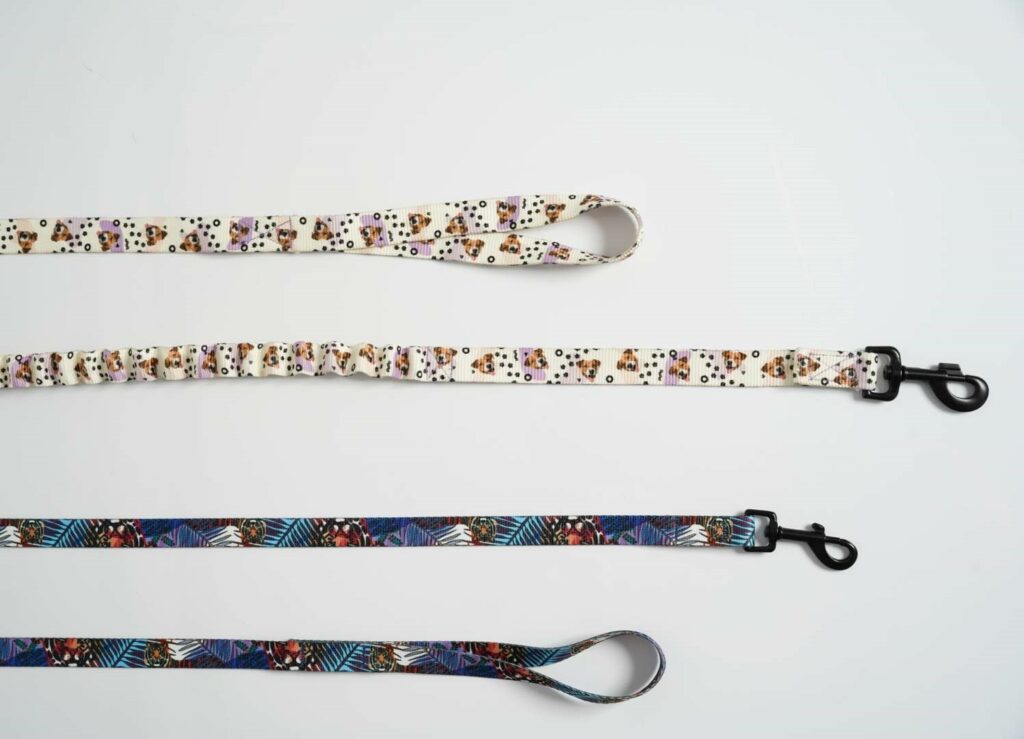Very often products made from tapes are single-coloured. The distributors offer the materials in their online stores, allowing the customers to choose already prepared, ready-for-sale tapes. A potential customer tries to choose a tape that would be the best match for the colour of a given product. The customer may order a very small amount of product from the supplier, and create a finished product using the tape as a raw material. In such situations, the customer may mark their product with logos in an attempt to achieve appropriate patches. Personalisation of the tape comes down to two popular options:
embroidery or sewing of popular patterns made of a satin material
Until now, personalised tapes were reserved only for large brands that were able to meet the required production volume condition. Smaller and medium-sized companies had to buy the tapes as a finished off-the-shelf product, without any influence on its final look. The process of adapting the finished product was limited to the post-production processing of the tape itself. The changes took place along with the reduction of minimum production volume by the printworks. By introducing certain production assumptions, printworks can allow their clients to order as little as 100 or 200 meters of the tape. This means that small and medium-sized companies have gained an influence on the production process of the tape. They can now create their own designs and reserve them as their own intellectual property. The finished product therefore becomes complete with its attractive colours, guaranteeing that the brand has the opportunity to establish a more personalised form of communication with its customer. One example of such a change involves the animal accessories offered on the Polish market. Let’s take a closer look at webbings prepared for leashes, collars and harnesses targeting dogs. The brands currently present on this market compete not only with product quality but also with its visual attractiveness. There are various brands that try to display their products with unique designs. In this case, it is important that the tape becomes more than the carrier of a given motif. It is equally important to transfer it to other elements of the final product. You can find the same motif printed on Buffalo pouches and softshell jackets made of the Oxford material. Complementarity is important in this respect, as this allows the company to sell the entire line of products. The company endeavours to maintain repeatability and continuity of its communications with a potential customer interested in a specific product.
How can we implement the printing of such products?
The companies selling the finished product are responsible for preparing an appropriate graphic file. When contacting the graphic designer, they present the basic assumptions for the project based on a given motif. For example, the project can be based on a cyclical event, such as Halloween, allowing the graphic designer to apply ghosts or spooky pumpkins. The graphic designer, in accordance with the design specification provided by the printworks, prepares a specific project for tapes and wider fabrics, such as Oxford. The designed pattern is sent to the printworks, where the dye is heated into the perfectly white material by using a sublimation process. The entire procedure can be completed in about 3 to 4 weeks, excluding the changes introduced directly on the website.
Risks related to bespoke projects.
Any company launching its own project onto the market carries the risk of not being able to sell it. This makes it a good idea to hire an experienced graphic designer with substantial experience. It is also advisable that when a company is just starting out, that they do not engage in seasonal projects, such as the Halloween project. The initial projects should be available throughout the calendar year to reduce the costs of the changes on the website. An additional and critical safety measure is for printworks to offer a low minimum production volume. An attractive minimum production volume of 100 meters of material does not expose the company to large losses in the event of a project failure. “Is the risk worth the potential increase in competitive advantage?” I leave it to you to answer that question.
